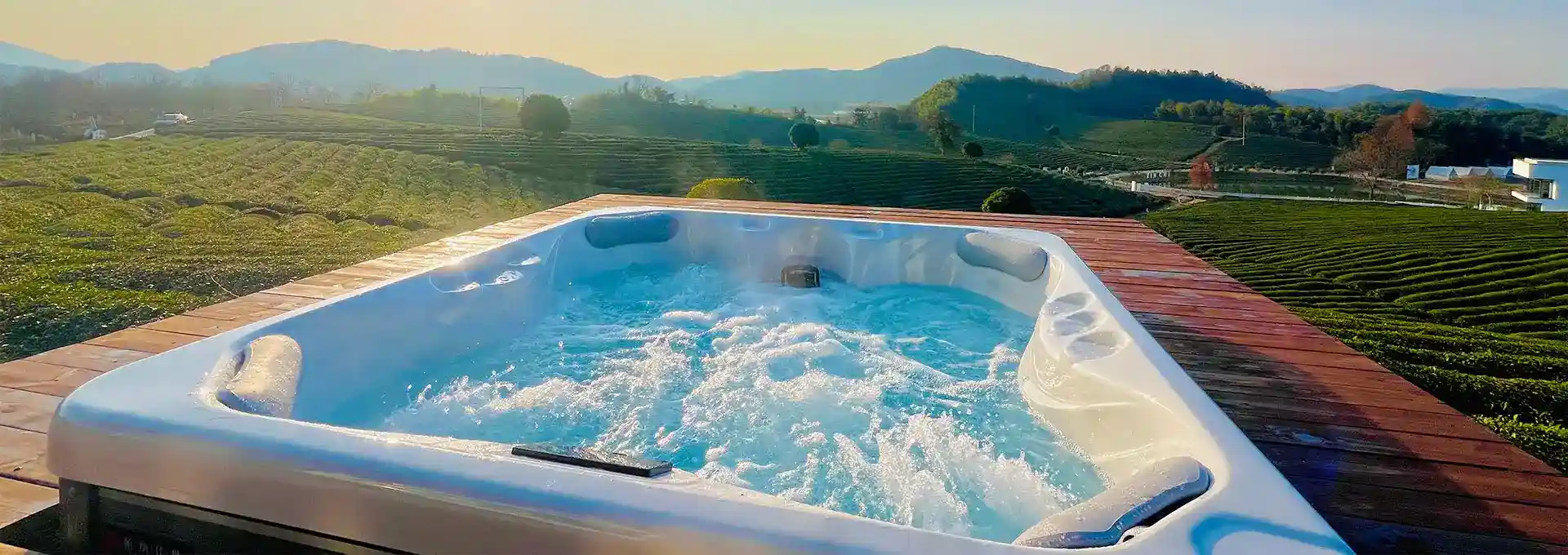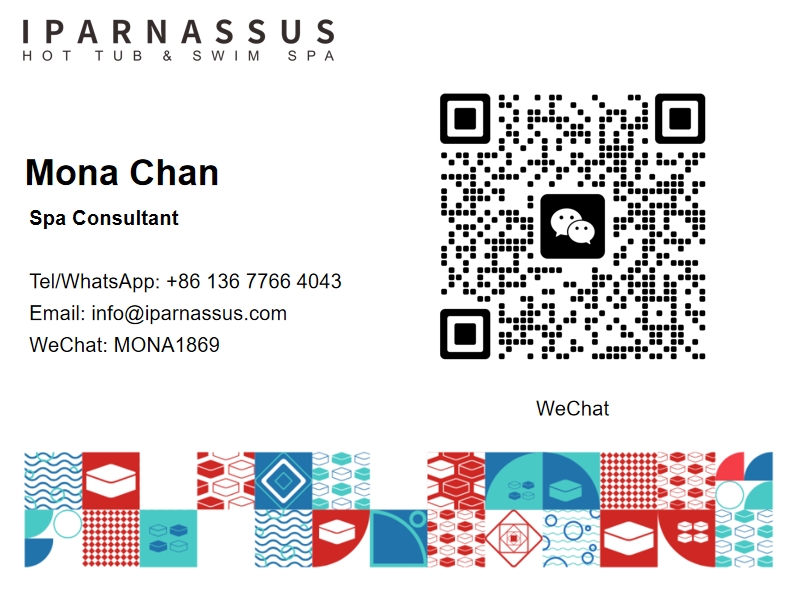How Often to Chlorinate a Swim Spa?
2024-12-19 16:55:37
Maintaining proper chlorine levels in your backyard swim spa is crucial for ensuring a safe and enjoyable swimming experience. Chlorination helps eliminate harmful bacteria and keeps the water clean and clear. However, many swim spa owners are unsure about the frequency of chlorination required for their spa. In this blog post, we'll explore the factors that influence chlorination frequency and provide guidelines to help you maintain optimal water quality in your swim spa.
What factors affect the chlorination frequency of a swim spa?
Several factors can influence how often you need to chlorinate your swim spa:
- Usage: The more frequently your swim spa is used, the more often you'll need to add chlorine. Heavy use introduces more contaminants, such as sweat, oils, and bacteria, which require more chlorine to neutralize.
- Bather load: The number of people using the swim spa at one time affects the chlorine demand. More swimmers mean more contaminants, necessitating more frequent chlorination.
- Water temperature: Higher water temperatures accelerate chlorine dissipation, requiring more frequent additions to maintain proper levels.
- Sunlight exposure: UV rays from sunlight can break down chlorine more quickly, especially in outdoor swim spas. This may require more frequent chlorination or the use of chlorine stabilizers.
- Water chemistry: Proper pH and alkalinity levels are essential for chlorine effectiveness. Imbalanced water chemistry can lead to increased chlorine consumption.
- Filtration system: A well-maintained filtration system can help reduce the chlorine demand by removing contaminants from the water.
Understanding these factors will help you determine the appropriate chlorination schedule for your swim spa. Regular water testing is crucial to monitor chlorine levels and adjust your chlorination routine accordingly.
How do you test chlorine levels in a swim spa?
Testing chlorine levels in your backyard swim spa is a crucial step in maintaining proper water chemistry. There are several methods available for testing chlorine levels:
- Test strips: These are the most common and easiest method for testing chlorine levels. Simply dip the strip into the water for a few seconds, then compare the color change to the chart provided with the test kit.
- Liquid test kits: These kits use reagents that change color when mixed with a water sample. Compare the resulting color to a chart to determine the chlorine level.
- Digital testers: These devices provide more accurate readings by analyzing a water sample electronically.
To test your swim spa's chlorine levels:
- Collect a water sample from about 18 inches below the surface, away from any jets or return lines.
- Use your chosen testing method to measure the chlorine level.
- Compare the results to the recommended range for swim spas, typically between 3-5 ppm (parts per million) for free chlorine.
- Record your results and adjust chlorine levels as needed.
It's recommended to test your swim spa water at least 2-3 times per week, or more frequently during periods of heavy use. Regular testing helps you maintain consistent chlorine levels and catch any potential issues early.
In addition to chlorine, it's important to test other water parameters such as pH, alkalinity, and calcium hardness. These factors can affect chlorine effectiveness and overall water quality. Many test kits include tests for these parameters as well.
Remember that accurate testing is the foundation of proper swim spa maintenance. If you're unsure about your test results or how to interpret them, consult with a professional or your local swim spa dealer for guidance.
What are the best practices for chlorinating a swim spa?
Chlorinating your backyard swim spa effectively requires following some best practices to ensure optimal water quality and safety. Here are some guidelines to help you maintain proper chlorine levels in your swim spa:
- Establish a regular chlorination schedule: Based on your swim spa's usage and the factors mentioned earlier, set up a consistent schedule for adding chlorine. This could be daily, every other day, or a few times a week, depending on your specific situation.
- Use the right type of chlorine: Choose a chlorine product specifically designed for swim spas or hot tubs. These are typically available in granular form or as tablets.
- Shock treatment: Perform a weekly shock treatment to eliminate contaminants and restore free chlorine levels. This is especially important after heavy use or if the water appears cloudy.
- Maintain proper water chemistry: Keep pH levels between 7.2 and 7.8, and alkalinity between 80-120 ppm. This ensures chlorine works effectively.
- Run the filtration system: Operate your swim spa's filtration system for at least 4-6 hours daily to help distribute chlorine and remove contaminants.
- Clean filters regularly: Rinse or clean your filters weekly and perform a deep clean monthly to maintain their effectiveness.
- Cover your swim spa: Use a cover when the spa is not in use to prevent debris from entering and reduce chlorine loss due to UV exposure.
- Maintain proper water level: Keep the water level at the recommended height to ensure proper circulation and filtration.
- Shower before use: Encourage users to shower before entering the swim spa to reduce the introduction of contaminants.
- Avoid overuse of chlorine: While it's important to maintain proper levels, excessive chlorine can be harmful and may damage your swim spa's components.
When adding chlorine to your swim spa, follow these steps:
- Test the water to determine the current chlorine level.
- Calculate the amount of chlorine needed based on your test results and the spa's volume.
- Pre-dissolve granular chlorine in a bucket of water before adding it to the spa.
- Add the chlorine solution evenly around the spa's perimeter.
- Run the jets for at least 15 minutes to distribute the chlorine thoroughly.
- Retest the water after a few hours to ensure the desired chlorine level has been achieved.
Remember that consistency is key when it comes to chlorinating your backyard swim spa. Regular maintenance and monitoring will help you keep your water clean, safe, and enjoyable for all users.
Conclusion
Maintaining proper chlorine levels in your swim spa is essential for ensuring a safe and hygienic swimming environment. The frequency of chlorination depends on various factors, including usage, bather load, and environmental conditions. By understanding these factors, regularly testing your water, and following best practices for chlorination, you can keep your swim spa in optimal condition. Remember to consult your swim spa's manual and local regulations for specific guidelines, and don't hesitate to seek professional advice if you're unsure about any aspect of backyard swim spa maintenance.
For more information on hot tub installations and to find out more about our products, please feel free to contact us at info@iparnassus.com.
References
- Centers for Disease Control and Prevention. (2022). Healthy Swimming/Recreational Water.
- Association of Pool & Spa Professionals. (2021). Basic Pool & Spa Technology.
- World Health Organization. (2020). Guidelines for Safe Recreational Water Environments.
- Swim University. (2023). How to Balance Your Pool Water in 7 Easy Steps.
- Hot Spring Spas. (2023). How to Maintain Your Hot Tub Water.
- Pool Research. (2022). Pool Water Chemistry Guide.
- Aqua Magazine. (2021). The Basics of Water Chemistry for Spas.
- Master Spas. (2023). Swim Spa Maintenance Guide.
- Leslie's Pool Supplies. (2022). Hot Tub & Spa Care 101.
- Hayward Pool Products. (2023). Water Testing & Chemistry Guide.



